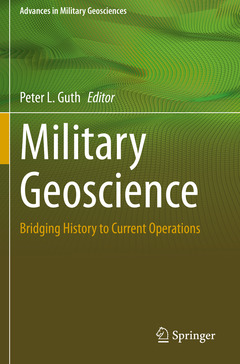Description
Military Geoscience, 1st ed. 2020
Bridging History to Current Operations
Advances in Military Geosciences Series
Coordinator: Guth Peter L.
Language: English
Keywords
GIS in battles; Military Geology; Desert warfare; Military land management; Military geology; Geospheric Engineering; Cadore Offensive; Fort Eben Emael; Big Hole; Battle of Spioenkop; Camel Corps; Barry Goldwater Range; Dasht-e-Nawar Basin; world regional geography; urban geography and urbanism; historical geology
Publication date: 08-2021
222 p. · 15.5x23.5 cm · Paperback
Publication date: 01-2020
222 p. · 15.5x23.5 cm · Hardback
Description
/li>Contents
/li>Biography
/li>Comment
/li>
A rare collection of scholarly contributions regarding the integration of geosciences and military history and operations
Includes new geologic and geographic data for many historically important battles and campaigns
Provides examples of modern scientific technology used to support military activities
Provides examples of how modern scientific methods and technology are used to evaluate historic events and places
Includes contributions from academic, government, and military experts



